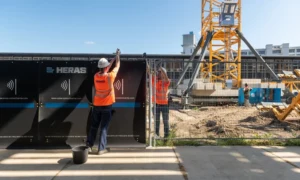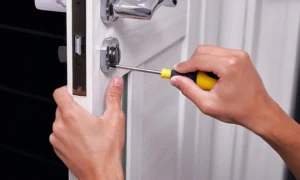In today’s dynamic landscape, the significance of LiFePO4 batteries reverberates across various sectors, marking a pivotal era in energy storage. Lithium Iron Phosphate (LiFePO4) batteries play a crucial role in the global pursuit of sustainable & eco-friendly energy solutions. As we delve into the realm of LiFePO4 batteries, one might wonder: How were LiFePO4 batteries discovered, and who invented them? What is the manufacturing process of LiFePO4 batteries? Is it worth the investment of buying a LiFePO4 Battery? Well, this guide is poised to clear all your queries and more, ensuring that you’ll have a profound understanding of LiFePO4 batteries by the end.
So, without further ado, let’s start this. Before delving into anything else, let’s give you a little background to the invention & meaning of LiFePO4 batteries.
Discovery & Meaning of LiFePO4 Batteries
The batteries made of Lithium Iron Phosphate, which uses Lithium salts (a natural mineral of triphylite) to store solar energy for an extended time, are known as LiFePO4 Batteries.
Arumugam Manthiram and John B. Goodenough first identified the presence of cathode materials of the polyanion class in lithium-ion batteries. However, they put further advancements on this discovery on hold. In 1996, John B. Goodenough’s research group at the University of Texas described the use of LiFePO4 as batteries in their published literature for the first time. Many scientists accepted this literature with open arms, but they also highlighted one disadvantage of using LiFePO4 batteries – The intrinsically low electrical conductivity of LiFePO4 batteries. However, this problem was resolved by Michel Armand & his coworkers at Hydro-Quebec & University of Montreal. Armand & his team replaced the coating of LiFePO4 particles with conductive batteries like Carbon Nanotubes to make LiFePO4 batteries with high electrical conductivity.
And that’s how LiFePO4 batteries were born.
An Overview of the Manufacturing of LiFePO4 Batteries
The production of LiFePO4 batteries involves a series of steps.
Step #1: Selection of Raw Materials
Firstly, raw materials are collected to assemble them into cells. This may include the positive electrodes (made from LiFePO4), negative electrodes (made from Graphite), and separators (made from polymers like polypropylene).
Step #2: Manufacturing of Each Side (Electrodes)
Positive Electrode:
An LFP (Lithium Iron Phosphate) powder or Graphite is used to crush positive electrodes into small particles and then blend them with conductive substances like Carbon Black. After that, a binding agent is used to make them stick together. After this, a resultant mixture is applied onto aluminum foil sheets and then stored until they get assembled in the shapes of batteries.
Negative Electrode:
Made of Graphite particles, these negative electrodes are cut into pieces, and PVDF (Polyvinylidene Fluoride) is then blended in it. Through a specialized machine called a ‘Calendar,’ both these powder particles are then blended.
Step #3: Assembling the Cathode & Anode
Here comes one of the main tasks – assembling the Cathode & Anode.
Cathode Assemble:
Between the two layers of electrode material, a separator sheet is placed. Then, pressure rollers are used at high temperatures to laminate the whole thing. Connectors and nickel-plated copper tabs are attached to each laminate side to finish the cathode assembly.
Anode Assemble:
Anode assembly also involves the placement of a separator sheet between the two layers. But, like Cathode Assemble, the material is not laminated together. Instead, it gets stacked on top of one another. Ultimately, nickel-coated steel tabs & connectors are attached to complete the anode assembly.
Depending on the battery design, the electrodes are made into cylindrical or prismatic shapes.
Step #4: Electrolyte Filling
After transforming the electrodes into a completed battery cell housing unit, they’ll be ready to be filled with electrolytes. A mixture of Dimethyl Carbonate, Ethylene Carbonate, & Lithium Hexafluorophosphate is injected into the cell. Upon injecting this into the cell, an electrical current will start flowing between the electrodes.
Step #5: Sealing
Finally, the LiFePO4 cell is sealed to prevent any electrolyte leakage. Sealing of LiFePO4 cells can be done using various techniques. Some of these are mentioned below.
- Compression Welding
- Hot-Melt Adhesive Application
- Ultrasonic Bonding
- Heat Staking
- Laser Welding
Step #6: Testing
After sealing the LiFePO4 cell, tests are conducted to avoid any leakage and misfunctioning of the battery.
Step #7: Battery Pack Assemble
Here comes the last step – assembling the LiFePO4 battery pack. After testing each LiFePO4 cell, these cells are connected in parallel or series to assemble large modules. Then, an enclosure is designed to protect the module from external elements such as high temperature or water. After installing an enclosure, components such as connectors, circuit boards & wiring harnesses are added. At last, security features such as fuses & insulation are added.
In this way, LiFePO4 batteries are manufactured. We mean, it was a little complicated process. But it is what it is.
LiFePO4 Batteries: Worth the Investment or Not?
LiFePO4 batteries are the ideal choice for many applications. They have high density, high electrically conductive ability, and high-quality & durable material. Most importantly, they have somehow revolutionized sustainable and solar energy systems. At this moment, a 24Volt Battery LiFePO4 battery is the preferred choice for a wide range of solar products – solar panels, inverters & lights. Thus, if you’re looking for an excellent battery for your solar product, buy & choose 24V LiFePO4 batteries for sale.








































